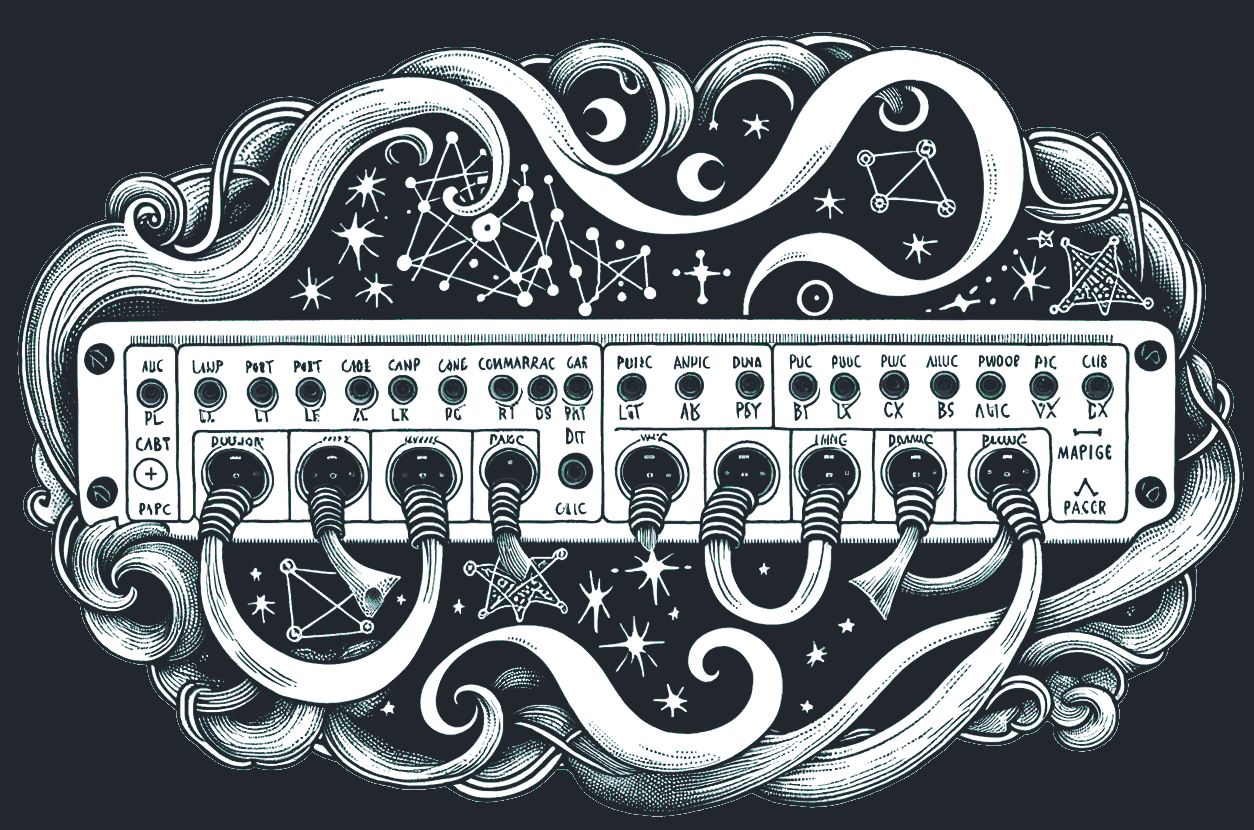
Quick Start Guide
System Requirements
- macOS with Apple M-Series or Intel chip
- REAPER 6.0 or later (auto-installed by setup wizard)
- Surge XT synthesizer plugin (auto-installed by setup wizard)
- Internet connection generation happens server-side
- Google Account social login login with google
Installation
1. Download Signals & Sorcery
Choose the version for your system:
- Apple Silicon Mac (M1/M2/M3/M4) - Download for Apple Silicon Macs
- Intel Mac (x64) - Download for Intel Macs
Note: The app is signed and notarized by Apple for security.
2. Install and Launch
- Double-click the downloaded DMG file to open it
- Drag Signals & Sorcery to your Applications folder
- Launch the app from Applications
- The setup wizard will guide you through installing REAPER, Surge XT, and configuring everything automatically
- On first launch, the REAPER bridge will auto-install to your REAPER Scripts folder

Basic Usage
Getting Started
- Open REAPER - Launch REAPER first (the bridge script will auto-start)
- Launch Signals & Sorcery - Open the app from your Applications folder
- Verify Connection - Check that the app shows "Connected" status
Creating Music with MIDI
The core workflow is describing the sound you want for each track, and the AI will generate MIDI and configure the appropriate synth patches:
"create a synth sub bass"
"add a 4 on the floor kick"
"add a snare"
"add a synth padd on bars 2 and 4"
Troubleshooting
Bridge Not Connecting
- Make sure REAPER is running - The bridge only loads when REAPER starts
- Check REAPER Console - Go to View → ReaScript Console to see bridge status messages
- Verify Bridge Installation - Look for
__startup.luain~/Library/Application Support/REAPER/Scripts/ - Restart Both Apps - Close REAPER and Signals & Sorcery, then reopen REAPER first
Surge XT Not Loading
- Verify Plugin Installation - Open REAPER → Insert FX → Search for "Surge XT"
- Re-scan Plugins - REAPER → Preferences → Plug-ins → VST → "Re-scan"
- Check Architecture - Ensure you installed the version matching your Mac (Apple Silicon or Intel)
MIDI Not Generating
- Check Track Has Instrument - Ensure the track has Surge XT or another synth loaded
- Verify Track Is Not Muted - Unmute the track and check volume levels
- Check Playback - Press spacebar in REAPER to start playback
- Rate Limits - Daily token limits are set per user for the free tier
Tips for Best Results
- Be Specific - Describe sounds in detail: "punchy techno kick" works better than just "drums"
- One Task at a Time - Break complex requests into steps
- Iterate - Generate MIDI, listen, then ask for adjustments
- Use Musical Terms - The AI understands music theory: keys, scales, chord progressions, etc.
Next Steps
- Experiment with different sound descriptions to hear how the AI interprets them
- Try combining MIDI generation with FX processing for more complex productions
- Explore the Features section for advanced capabilities
Manual Dependency Installation (Optional)
Note: The setup wizard handles all dependency installation automatically. The steps below are only needed if you prefer to install dependencies manually or need to troubleshoot installation issues.
Install REAPER
- Download REAPER from https://www.reaper.fm/download.php
- Download the version matching your Mac:
- macOS (ARM64) for Apple Silicon Macs (M-Series)
- macOS (x64) for Intel Macs
- Open the downloaded DMG and drag REAPER to your Applications folder
- Launch REAPER at least once to complete initial setup
Install Surge XT
- Download Surge XT from https://surge-synthesizer.github.io/
- Download the version matching your Mac:
- macOS (Apple Silicon) for M-Series Macs
- macOS (Intel) for Intel Macs
- Run the installer - it will install the VST3 plugin to the correct location
- Verify installation: Open REAPER → Insert a new track → Click FX button → Search for "Surge XT" in the plugin list
